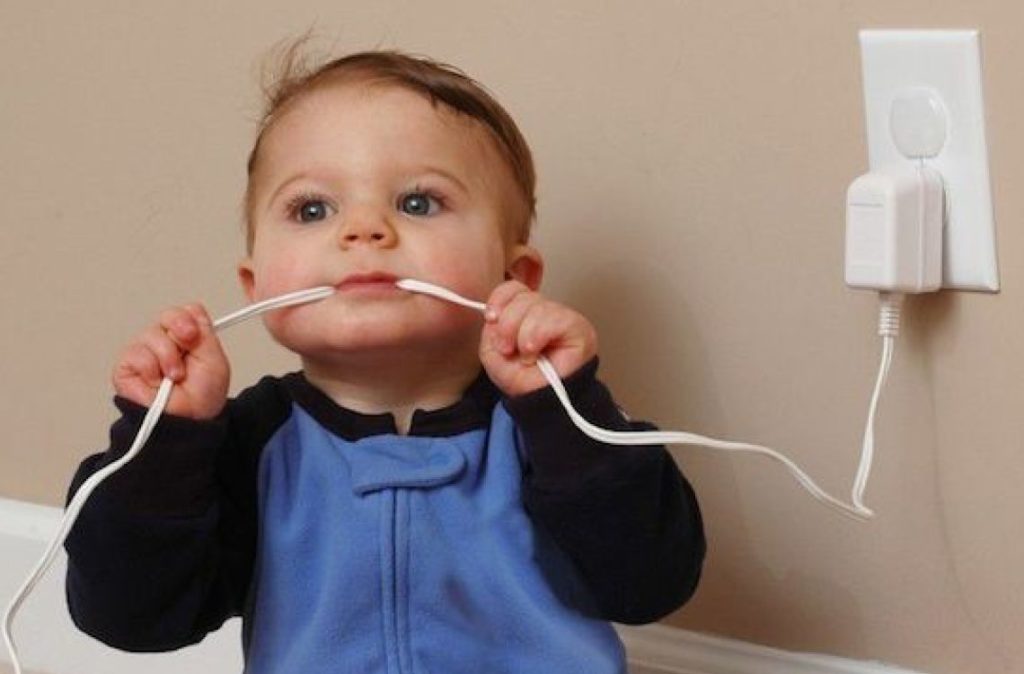Every parent wants their children to grow up healthy and strong in the place where they deserve to feel safest: at home. The good news is that there are simple and easy steps that families can take to protect their children. Following are few of the crucial home safety tips for first-time parents to consider.
1 Cover all electric sockets with plug protectors.
You can’t curb a baby’s curiosity. Their little fingers are eager to pick and prod at everything and anything. Electrical sockets are especially dangerous and the fact that they are situated so close to the ground makes them an even bigger hazard.
2 Install home safety gates.
As soon as they’re able, you can expect your toddler to be crawling, rolling, and attempting to walk all over the house. Safety Gates should be put up so that they don’t fall down any stairs or wander into rooms which they aren’t supposed to go into.
3 Use a baby monitor.
You can’t realistically be physically watching over your baby 24/7. A baby monitor is an excellent device which allows you to do all the extra work you have to do while keeping an extra set of eyes and ears on your baby.
4 Install doors and windows safety locks.
Install doors and windows locks is one of the most important home safety tip. Once your baby is able to grasp things and begins to understand how a door or a window can be opened, they could seriously injure themselves.
An open window is especially hazardous because your baby could attempt to crawl out of it and fall. An open door could lead to your baby wobbling out into the middle of the road. For these reasons, it is absolutely essential that you place extra locks and guards on all windows and doors.
5 Childproof all cabinets.
Some cabinets may contain things which are dangerous for babies. Some may even contain heavy items which could fall on the baby if jerked open. To prevent any injuries from taking place, childproof all cabinets and doors in your home with locks so your baby can’t open what they shouldn’t.
6 Check your furniture for sharp corners.
It is highly likely that your little child will spend a lot of time waddling around your living room. The only problem is that most living rooms are littered with furniture that could easily harm your child.
Side tables, coffee tables and even some couches all have pointed corners. On their own these sharp corners are not really an issue.Add a baby who is learning to walk and constantly tumbling over to the mix and things start to get a little dangerous.
If your baby falls and knocks his head against the corner of your coffee table, there is a risk of cuts, bruises or worse. So how can you set about baby proofing furniture corners?
The easiest way to prevent fall injuries from solid furnishings is to soften up those pointy corners and edges with padding. The baby proof furniture padding not only protects corners, but can be used on the edges as well.
7 Install video surveillance.
Just as with baby monitors, video surveillance allows you to always have an extra set of eyes on your baby. Say you need to take out the laundry and your baby is playing in the living room; video surveillance lets you bustle about and get your work done while keeping an eye on the baby.
8 Use a baby bedrail.
There comes a time when your child becomes a little more adventurous. Sure, there are no sure-fire signs that show your baby is ready to move on from crib to the big-kid bed. Typically, you can make the transition to bed when your baby reaches age between 18 and 24 months. But the concern with baby sleep on a bed is that they can roll off the bed, and this is where a bed rail is necessary to stop them from falling off.
9 Go wireless.
If there are lots of wires hanging around your house, your baby could get tangled up in them or even choke. Therefore, keep all wires organized and out of reach to prevent any injuries.
10 Clear the clutter.
While your baby is busy exploring and playing, they’re not going to be paying attention to what’s lying around and could potentially hurt them. Unless of course, they pick up something dangerous to play with.
Make a conscious effort to clear up all the clutter in your home and keep it clean. That way you reduce the risk of your baby playing with things that could hurt them, or tripping and falling over anything lying around.
Every year, millions of kids are injured or exposed to toxins right under their own roof. Following these 10 home safety tips could probably save your kid’s life.
Find more motherhood stories here.
